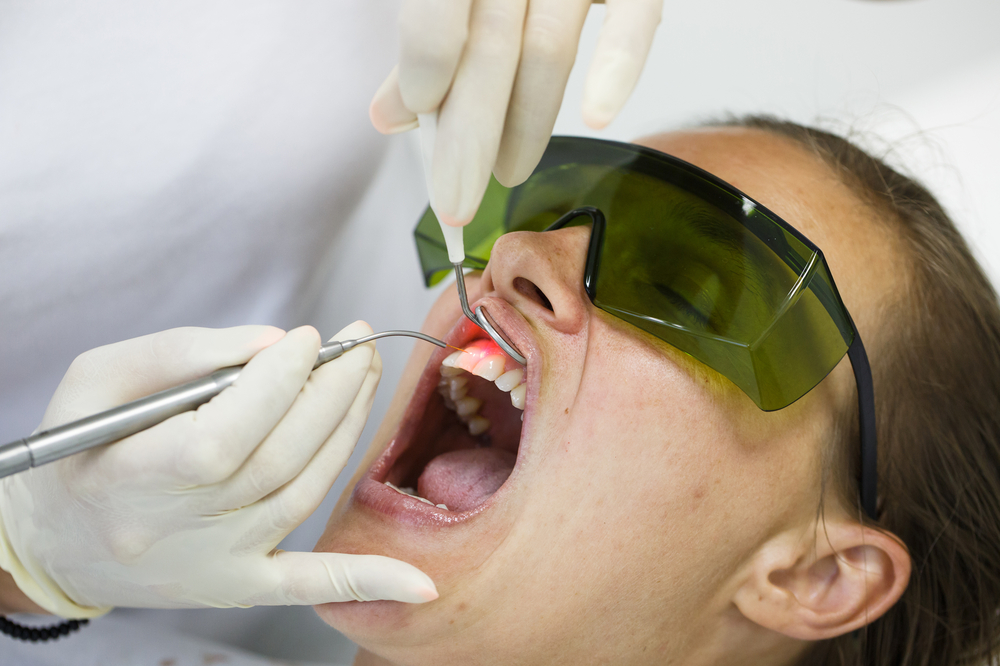Handling gum disease with incisions and stitches is a thing of the past. Gum disease can now be abolished by a minimally invasive laser treatment. LANAP is a laser gum disease treatment, which is an acronym for Laser Assisted New Attachment Procedure. This is a great option for patients because it eliminates the amount of bleeding and healing time. With this treatment, the dentist will use the laser to kill bacteria and stop the disease.
Gum disease is an ailment that a lot of patient’s experience in their life. Gum disease usually is associated with lack of oral hygiene, and with proper care of the oral cavity can be nonexistent. Gum disease may also be hereditary, so it is important to keep an eye on your oral health through the years.
Unfortunately, if gum disease is not seen at the early stages of the symptoms, it can turn severely problematic. It is important to identify gum disease at the first stage. If you are noticing signs of bleeding gums, that are abnormally red and inflamed, with sensitivity to temperatures, you should seek dental care. When this is complete, and you’ve consulted with a doctor, treatment should be started. Patients used to stay away from treatments at all costs because of the fear of pain associated with the gum disease procedure, but with LANAP, pain is no longer a thought.
If you are suffering with gum disease, LANAP is a good option. Again, LANAP is minimally invasive and the procedure destroys bacteria and dead tissue in the mouth. The special laser cleans the diseased gum and prevents infections from forming. The laser is a thorough treatment that does not leave major healing time, bleeding, or need stitches. Benefits to LANAP include:
-reduced bleeding
-less inflammation
-little to no gum recession
-and minimal discomfort
Contact Dr. Toback as early as possible if your gums are feeling tender and sensitive to food and brushing. It is important to catch gum disease at the earliest phase possible. Schedule an appointment for a routine checkup and cleaning, to ensure your dentist and their team of specialists catch any gum disease signs early.

